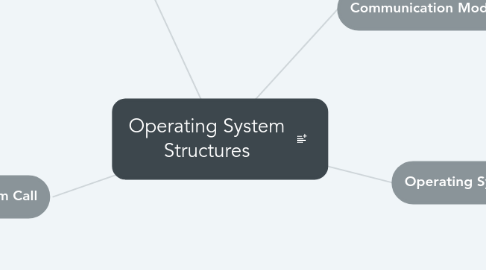Operating System Structures
par Phill Chu


1. Operating System Services
1.1. User interface
1.2. Program execution
1.3. I/O operations
1.4. File System manipulation
1.5. Communications
1.6. Error detection
2. System Call
2.1. Device management
2.1.1. Request & Release device
2.2. Information maintenance
2.2.1. Get & Set time / date
2.3. Communication
2.3.1. Create & Delete communication connection
2.4. Process control
2.5. File management
2.6. Protection
3. Try MeisterTask!
4. Operating System Design Goal
4.1. User goal
4.1.1. Convenient to use , Safe & Fast
4.2. System goal
4.2.1. Easy to design , Error-free
5. Communication Models
5.1. Layer Approach
5.1.1. Message passing
5.2. Microkernel
5.2.1. Shared memory
5.3. Advantages Microkernel
5.3.1. Extensibility
5.3.1.1. Allow additional
5.3.2. Flexibility
5.3.2.1. New feature added
5.3.3. Reliablity
5.3.3.1. Modular design
5.3.4. Portability
5.3.4.1. Changes needed port to new processor

